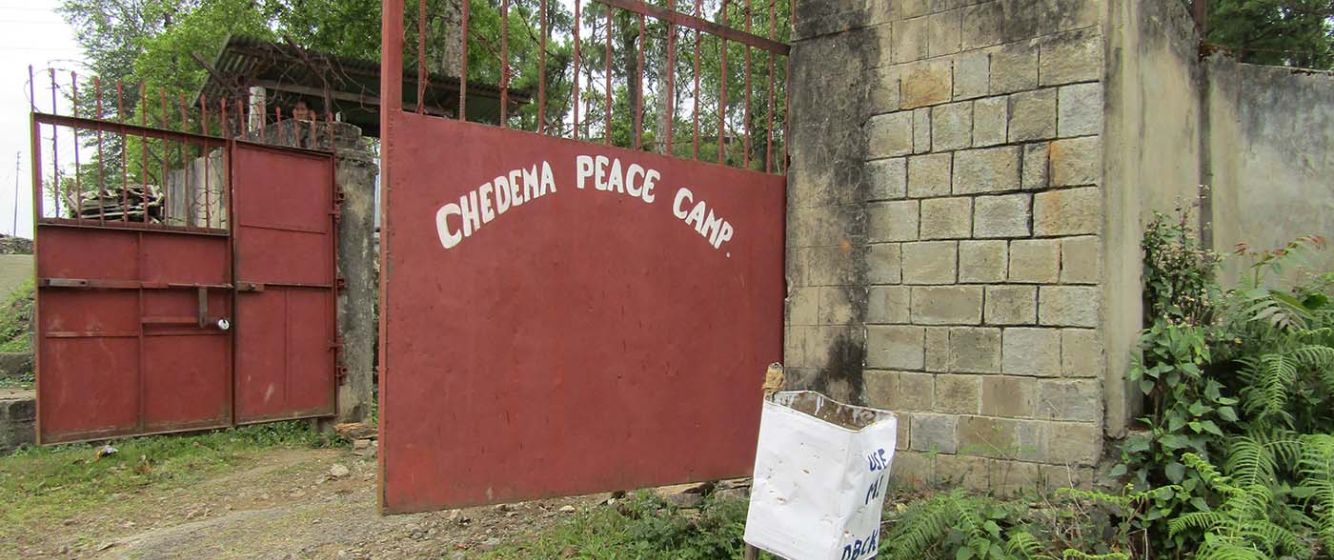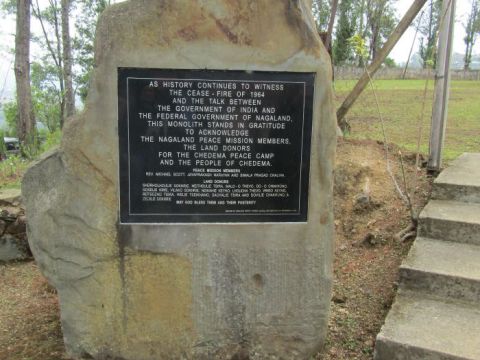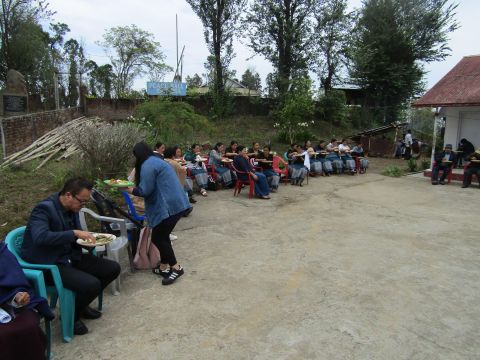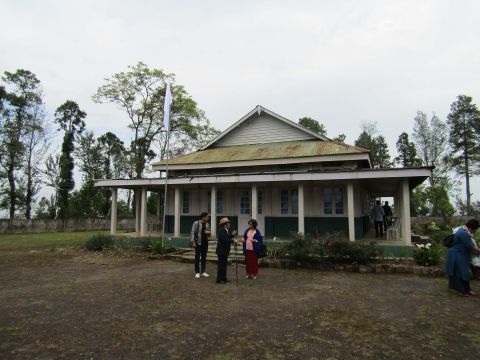16 May 2019: Twenty kilometers from Kohima town lies Chedema village, a sleepy little hamlet flung in the hills of Kohima district in Nagaland, in northeastern India. As I drove up the narrow track from the capital Kohima's Choto Bosti, literally, little township or parish, through hilly terrain that morning, past clusters of cottages and colonies built around seminaries and churches Chedema 's history unfolded like a story from the sacred past of the Naga 'nation'. . .
It was in 1964 that both the Federal Government of Nagaland, a rebel organisation seeking to liberate the Nagas from Indian control ( referred to as the underground), the erstwhile Naga National Council led by nationalist leader , Angami Zapu Phizo, and the Government of India agreed to end the armed conflict that had raged since India's independence and sign a ceasefire agreement. This was made possible by the initiative of the Nagaland Peace Mission constituted by the Nagaland Baptist Church Council, comprising former Assam Chief Minister, late BP Chaliha, Indian Sarvodaya leader, late Jayaprakash Narayan and a clergyman from England, late Reverend Michael Scott. The Peace Camp of Chedema, tucked away at the top of the hillside behind the Keyake Border Security Force outpost revealed the much-guarded symbol and pride of the Nagas, the Naga National Council's retreat after the historic ceasefire was announced. This was where several members of the Naga underground came to live , as many others did in a few other designated camps elsewhere across the state, honoring the ceasefire by laying down arms and shunning the path of rebellion to broker peace with a government that they still remained wary of . At the centre of the grounds which was a heath-like vast flatland, the old house stood , proudly, on the hill,nearly a relic now but one that came alive that morning to the wailful sound of the choir of the Kohima Baptist Church and the cars of Naga elders that pulled up at the gates of the Chedema camp to celebrate NNC's Naga Plebiscite Day.

With a Naga elder, former Chairperson of Nagaland State Women's Commission , Sano Vamuzo
It was an emotional moment, as I could observe, fellowship and nostalgia taking over the crowd of over a hundred fifty people, mostly the elderly, who had gathered that grey morning to pay their tributes to those that had fallen, to the revered spirit of Angami Phizo who had dreamt of a sovereign nation and to all those who swore to realise that dream. Academic and former Principal of the Patkai Christian College at Chumukedima, Kolezo Chase led the congregation in the house, which included among other programs, a reading from the Bible, a choir by the Women's group of the Central Baptist Church of Kohima and a rousing speech by Adinno Phizo , President of the NNC and daughter of the pioneering Naga leader A.Z.Phizo.
The Plebiscite is the cornerstone of the Naga aspiration for sovereignty and constitutes a central memory and foundation of the struggle for the Naga 'nation' which as Phizo believed was bound together by the Naga heritage. This is a faith of onness unique to the land and people and founded upon (a) Community Organisation (b) People’s sovereignty over ownership of property and land, (c) culture: a culture of love with a true respect for individual personality, a society that admits no strata of social class, caste or creed, religion or race and (d) real peace put into an abiding practice in the lives of men and women
As Phizo believed , and stated in his monumental Plebiscite speech on 16 May 1951, he urged the Nagas to take their stand through the impression of thumb for an independent Naga nation which did not want war with India or any other enemy. He reiterated " And we do not want to see another war in our land. We do not want to make our country a defence line. We do not want to let our children live in battlefields. We want to make our country a place of happiness, of security and rest. We hope and we cherish that we can make our country a meeting place of the East and an understanding center of the world. We believe that we shall become a better friend and that we can remain a better friend to India and the outside world if we are left to ourselves – unmolested and unexploited. We believe that it is not only for Nagaland but for India and other surrounding countries as well that there is a better chance of creating and retaining peace and good will with a SOVEREIGN NAGALAND being in existence." It was on that day that the plebiscite voted with 99.9% of Nagas in favour of an independent nation. The people had spoken . And it was another matter that the government of India did not take cognizance of this significant move by the Nagas. The rest, of course, is history.
The fraught lives of Nagas who were, apart from their nationalist struggle, victims of a brutal and violent World War II battle fought at Kohima in 1944 against the Japanese invading Naga territories in a bid to pose military challenge to the imperial British and Allied troops stationed there has never ceased to haunt the collective consciousness of the Nagas. It litters every memory and meaning that older Nagas inscribe onto their everyday life, apparent when one picks up a conversation with a Naga about the past. As the cheerful Mr Chase ,a later-day avatar of the NNC leadership, summed up and concluded the ceremonial remembrance day with a mass prayer , he drove home in the Angami language ( also a major tribe known by the same name), the reigning motif of Naga nationalism - Urra Uvie ! , which simply means "our country is ours" , a symbolic assertion of that Naga identity and place even as the process of reconciliation and negotiations to ink a peace accord are currently on. In its historical context , the Naga need to break away nearly seventy years ago from the Indian nation-state to their chosen path of resistance was perhaps understandable. And yet, an era and several interventions later with changes in the realpolitick of revolution, their memorialisation of this day and event clearly keeps the idea of the 'sovereign Naga nation' still sacrosanct and alive.





Comments
Thank you Rakhee for this…
Thank you Rakhee for this dispatch on how the idea of nation provides a very real memory of mobilisation for a shared cause. It does indeed give hope a chance to re-visit such attempts not as anti-national or communal but as a valid mode of negotiating collective selves.
Road to Chedema
Indeed Aarti...and I am trying to put forward the contexts in which the Nagas can be understood today. The idea is to establish the causality of their fraught history and to negotiate these "collective" and unique selves. And I am still discovering so many nuances...hence also editing the piece which is really not finished!
Recollections
It was good to read this. I have heard about Phizo's 'passport' incident which is very telling and in many ways resonates the quote you've included. I'd like to read some of the recollections of the older generation.